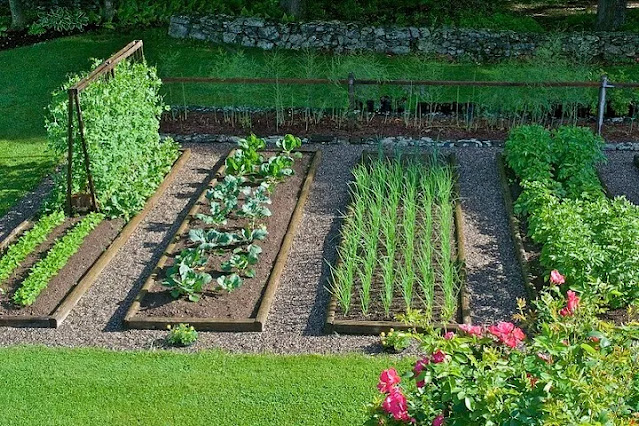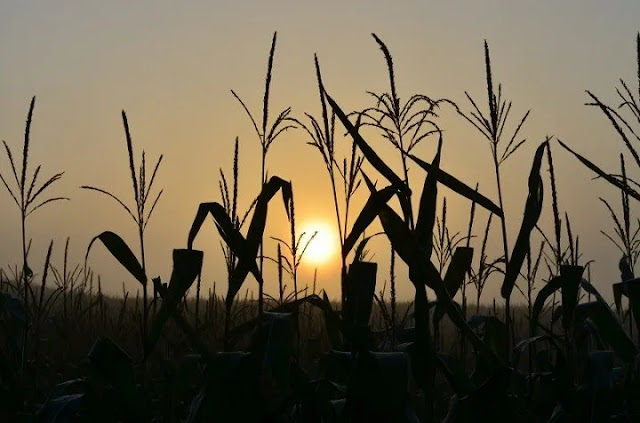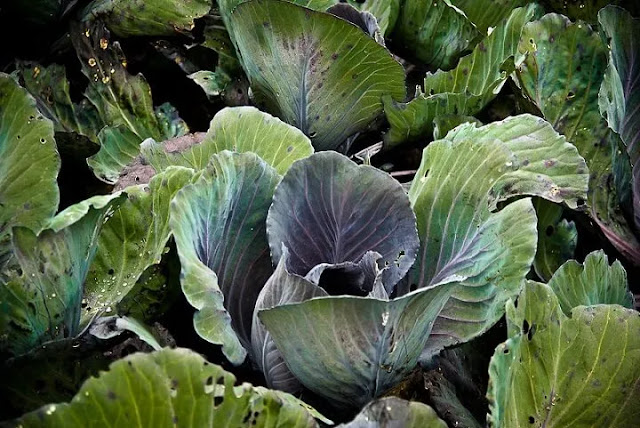https://ground-power-generator.blogspot.com/2021/06/the-highest-calorie-crop-you-can-grow.html
For the first time since World War II, many Americans are worried about food security and are looking to level up their self-sufficiency game. In and of itself, this is a very good thing, but it’s also a little problematic.
In this new victory garden movement, vegetable seedlings are being grabbed off the shelves as quickly as they arrive, without any planning or preparation. Many families are going to find out the hard way that food doesn’t just grow itself. Aside from work, self-sufficiency also takes a lot of strategizing.
Most of us vastly overestimate our ability to grow enough food to feed our families. While a dozen tomato and pepper plants may yield a huge harvest, can you live off of it? Definitely not.
This isn’t about eating picturesque heirloom vegetables on the porch, it’s about producing enough calories to make a dent in your nutritional needs. So let’s talk about calorie cropping – growing with the goal of providing calorie-rich food, preferably food you can store for several seasons.
High-Calorie Crops
There are two ways of looking at the calorie potential of a crop: how many calories a harvest contains per pound, and how many calories you can produce per 100 square feet.
Consider this: In 100 square feet, you can grow 70 to 100 pounds of cabbage or you can grow seven pounds of peanuts. While the cabbage is about ten times more mass, it provides less than half the calories (a maximum of 18,000 calories for the peanuts versus 11,000 for the cabbage).
The same amount of space will yield up to 90 pounds of potatoes and a whopping 32,000 calories!
As you can see, if you’re trying to feed your family, then you need to focus on the highest-calorie crops that require the least amount of space. Below is my list of suggestions:
Potatoes
When it comes to the most calories in the least amount of space, potatoes are the big winner. Not only are they easy to grow, but they store well and can last a while in a root cellar.
Sweet potatoes are fantastic because they love hot weather and their greens are edible, nutritious, and plentiful in the hottest stretches of summer.
Grain Corn
Corn will give you a lot of bang for your buck – around 30,000 calories per 100 square feet! Buy non-GMO seed if you want to save seeds to plant the following year.
While this isn’t tasty sweet corn that you can eat off the cob, you can grind it into flour, which stores practically forever and can be used in many interesting ways.
Wheat
Wheat is a surprisingly easy crop to grow, harvest, and use. You can produce around six pounds of wheat per 100 square feet – which means in 800 square feet you could grow enough to make a weekly loaf of bread for an entire year.
Better yet, you can plant it in the fall and let it grow over winter (instead of leaving your beds empty), then harvest in the early summer. If you have livestock, they can eat the straw left after harvest, and you can plant your next crop right into the stubble without plowing or tilling.
Dry Beans
Beans are a must-have in the calorie-intensive garden. Do your research to find the varieties that perform best in your region, and you can expect between three and six pounds of beans per 100 square feet.
They mature more quickly than many other crops (in 7 to 10 weeks) and pack more than 1,500 calories per pound. Stored properly, they can last decades.
Peanuts
If your climate is warm enough, this groundnut is a solid bet for a couple of key reasons. Peanuts are rich in protein and can be pressed to make oil for cooking.
They are also quite high in calories and require little maintenance or care for the 17 weeks it takes them to mature.
Winter Squash
Pumpkins, butternut, acorn squash – these rich and delicious autumn harvests store well, produce a ton of mass per 100 square feet (50 to over 100 pounds) and store well over winter.
Kale, Collards, and Cabbage
While not the most calorie-dense kids on the block, these guys have some exceptional qualities. Cabbage can overwinter in a root cellar, and can also be made into sauerkraut, which lasts for months and is full of probiotics.
Kale and collards give you calcium-rich greens through the winter months when fresh vegetables are in short supply.
Related:
Portable Backpacking Camp Stoves for Preppers
Fastest-Growing High-Calorie Crops
Okay, so let’s say you want to provide a lot of calories in a hurry. The bad news is that none of these crops are going to grow overnight. You are going to have to wait at least eight weeks.
Crops like kohlrabi, spinach, and radishes can provide a reasonably high number of calories in three to six weeks. Wheat is a slow crop that won’t provide you with anything until the following year, and corn is not much faster.
Root vegetables such as beets, carrots, and turnips offer a faster turnaround than the other crops listed, with a pretty good payoff in calories. If you have enough space, then by all means, grow a variety of faster-maturing crops to keep things interesting while you wait for your calorie-crops to mature.
High-Calorie Growing Strategy
By far, the most comprehensive strategy I’ve come across for growing calories is the biointensive method. This growing method has been field-tested for decades and is used around the world to produce high yields using less water and space than conventional methods.
The biointensive rule of thumb is that it takes 2,000 square feet to produce a single person’s annual caloric needs, so take that into consideration when planning your garden.
Making Calories Last Multiple Seasons
As far as producing a big chunk of the calories you need in your own garden, one thing that really increases capacity is food storage. Drying beans and grains is one thing, but that’s just the beginning. Greens can be dehydrated, vegetables can be canned, frozen, or pickled, and a good root cellar can keep produce for many months.
When you build up a supply, each year becomes progressively easier because you’ve got expanded capacity already built up.
Final Notes
I’ve provided a lot of examples of calorie crops to give you an idea of what is possible. For my own garden, if I were to focus on calories alone, I would primarily grow wheat, potatoes (sweet and regular), beans, and winter squash.
Wheat is easy to grow, so you can plant it and more or less forget about it. Potatoes are prolific and effortless to produce (if I could only grow one, this would be my top pick).
Beans give you plenty of fresh, green pods for instant gratification, and are a winter favorite around our house. And winter squash is versatile, delicious, and stores well.
Don’t let any of this discourage you. Even if you don’t have the space or
gardening know-how to grow 100% of your own food, at the very least you can supplement your diet with produce from your own garden.
Recommend for you: This professor plugged his house to Earth’s core.... totally legal
The Earth’s core is producing 47 trillion Watts of electricity right beneath our feet each and every second. That’s 1 million times more than the mankind can consume.
For various reasons, science couldn’t (or didn’t want) to figure out a way to harvest this immense source of energy up until now....
More Details:Discover how to power his house from earth’s core...totally legal.
You must simply plug a couple of wires into the ground …and not worry about weather conditions for your rest of life












This update outlines key issues and slot games olx128 recommendations addressed to Deputy Prime Minister Paula Bennett.
ReplyDelete